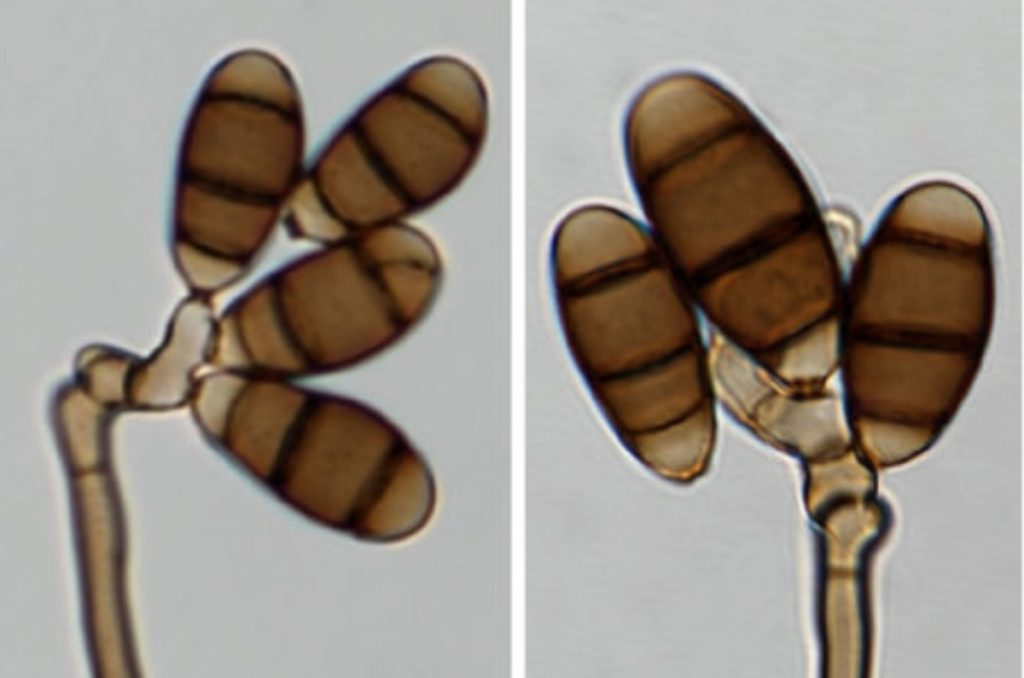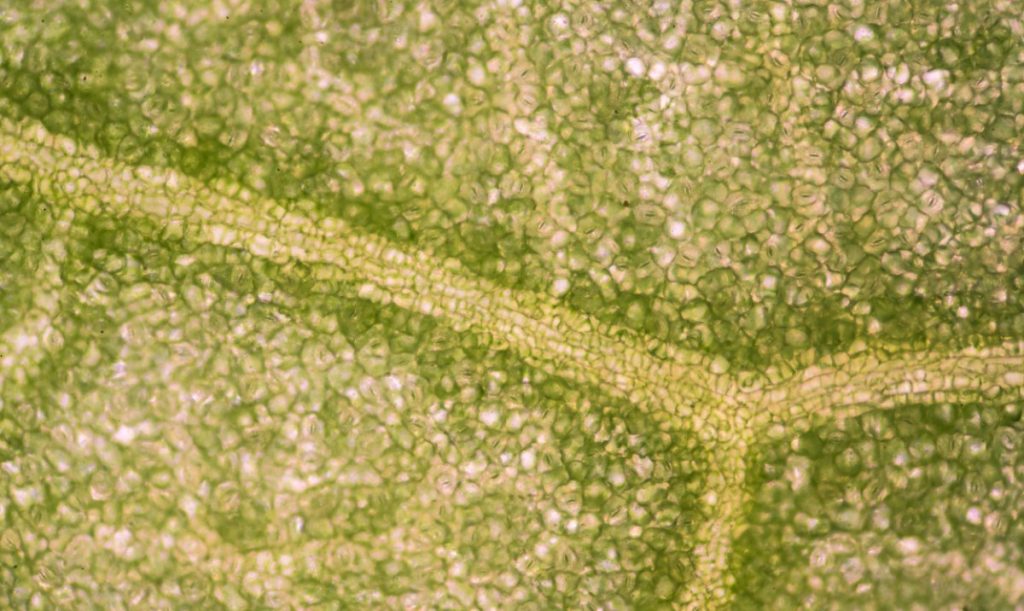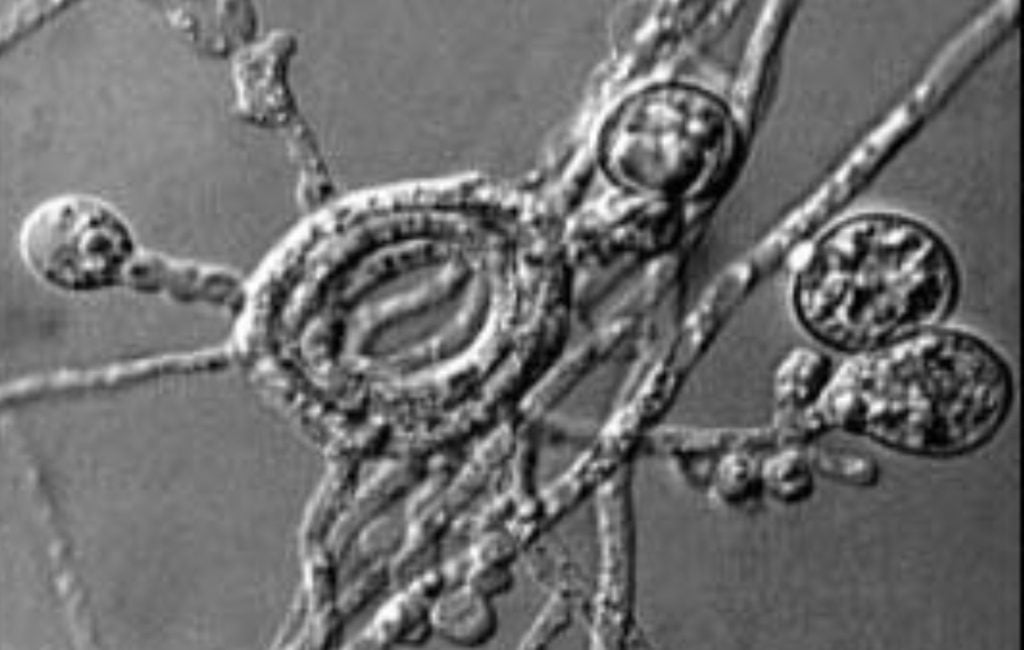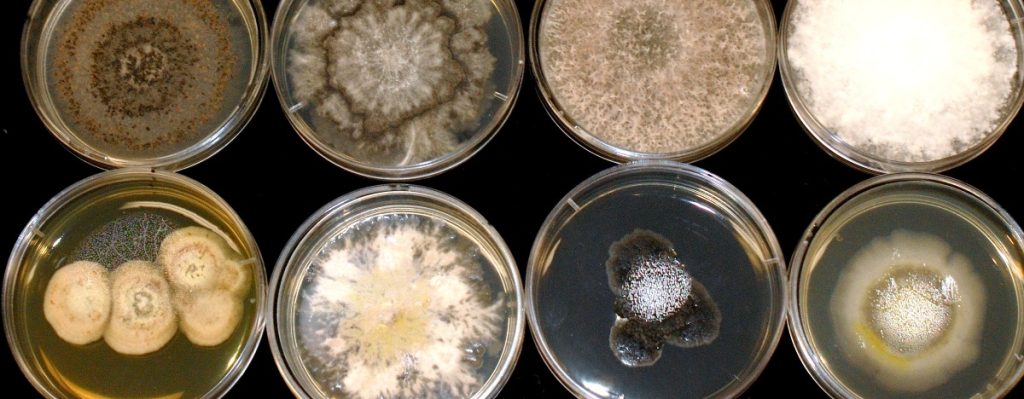Most plants have symbiotic relationships with endophytic fungi and would not survive without them.
Beneficial associations between plants and endophytic fungi have existed for millions of years and are currently the focus of several studies as they potentially have amazing agricultural and medicinal applications.
But, we don’t know much about endophytic fungi, and scientists have only classified a fraction of the estimated species.
Read on to learn more about endophytic fungi, why they’re the focus of many scientific studies, and how they benefit plants and humans.
What Are Endophytic Fungi?
Endophytic fungi are tiny fungi that live inside a host plant’s tissue and cells. They may live inside the host plant their entire life or only part of their life cycle.
The word endophyte comes from the Greek words “endon,” meaning within, and “phyton,” meaning plant.
Endophytic fungi are a bit of a mystery. Like parasitic fungi, they invade a host plant, but unlike parasites, they do not cause damage or disease, and the relationship benefits host plants.
Because they have mutually beneficial relationships with the host plant, you may think they’re mycorrhizal, but unlike mycorrhizal fungi, they’re easy to cultivate without a host.
They also often live inside the tissue and cells of the entire plant, including the leaves, stems, flowers and seeds, while mycorrhizal fungi only interact with a plant’s roots.
And, if the host plant is under stress or dying, some endophytic fungi have the potential to become saprotrophs or pathogens.

Types of Endophytic Fungi
You’ll find endophytic fungi worldwide, and scientists agree that almost all plants contain fungal endophytes, including algae, mosses, grasses, ferns, shrubs, annuals and trees.
Some endophytic fungi form associations with many different plant species, while others are specific to a particular plant or plant family.
Scientists have divided endophytic fungi into two main groups, clavicipitaceous and non-clavicipitaceous. These are then further broken down into four classes.
The clavicipitaceous group only forms symbiotic associations with grasses. Class 1 endophytes fall in this group.
You’ll find these fungi in the rhizomes and shoots of grass species, and they’re transferred to new plants in the grass seeds.
The non-clavicipitaceous group, not found in grasses, form associations with other types of plants and fall into 3 broad classes based on where they’re located in plants.
Class 2 fungal endophytes can colonize the entire host, while class 3 only exists in the above-ground parts of a plant, and class 4 are only found in the roots of plants.
How Do You Identify Endophytic Fungi?
Endophytic fungi are tiny, and the only way to identify them is to take a sample of a plant host and use it to grow a fungal culture using an agar plate.
This culture is then studied under a microscope, and scientists use physical characteristics and DNA to identify the fungus.

Do Endophytic Fungi Produce Mushrooms?
Scientists still have much to learn about endophytic fungi and may classify some mushrooms as endophytes in the future.
Most known endophytic fungi are tiny and don’t produce mushrooms, as they often use other reproduction methods.
Some have intricate relationships with plants, including using the plant’s reproductive structures to spread to new hosts.
In these species, fungal hyphae grow throughout the plant’s cells, including the cells in pollen and seeds.
They are then transferred vertically in the seeds that grow to become the next generation or transferred horizontally, with the plant pollen, to other unrelated plants by wind and pollinators.
Other endophytic fungi produce spores that wind, water and insects then disperse.
How Do Endophytic Fungi Get Their Food?
Endophytic fungi get the nutrients they need from the host plants, and their mycelium can colonize intercellular and intracellular spaces in these plants.
Extensive colonization usually occurs in a plant’s roots rather than the leaves or stems, as fungi in the above-ground parts rely solely on the plant’s intercellular fluid for nutrients.
The fungi that colonize these parts appear to grow at the same rate as the host plant’s stems and leaves. Their hyphae attach to the plant’s cell walls but do not invade the cells themselves.
But, the hyphae of endophytic fungi that colonize plant roots invade the spaces between cells and inside the cells themselves.
These fungi have access to the nutrients the plant’s roots encounter in the ground and the sugars that the plant produces through photosynthesis.

Are all Fungi Endophytes?
Not all fungi are endophytes. Many fungi use other methods to get the nutrients they need.
Scientists classify fungi in several ways, but when classified based on how they get the nutrients they need to survive, they fall into four groups.
The four groups are:
- Endophytes
Some fungi use more than one method to get the nutrients they need and have characteristics of more than one group.
For example, some fungi are both saprotrophs and parasites, and others are mycorrhizal until the host tree dies and then survive as saprotrophs until they disperse their spores and find new hosts.
How Do Fungi Benefit From Endophytic Relationships?
Endophytic relationships have several benefits for fungi, including:
- Access to the nutrients they need
- A secure space to grow
- Ideal growing conditions
- Limited competition from other microorganisms
How Do Plants Benefit From Endophytic Fungi?
A plant can host more than one endophytic organism, and different plants form associations with specific endophytes that offer varied benefits.
The endophytes in some plants act as a defense against herbivore pests by making the plant poisonous or taste bad.
In others, the endophytic relationship helps the plant cope with extreme conditions like droughts.
Some endophytic fungi increase seed germination rates and promote the growth of roots and shoots, and others protect a plant’s roots from dangerous bacteria and other microbes.
To put it another way, depending on a plant’s requirements, endophytic fungi may:
- Stimulate plant growth
- Increase disease resistance
- Improve a plant’s ability to withstand environmental stresses

Are Endophytic Fungi Good or Bad?
True endophytic fungi are good, and although many produce toxic compounds, they use these to help the plant discourage harmful pests and bacteria.
This is not the only reason endophytic fungi are good. They also provide many other benefits for plants and humans.
We’ll look at some of these in more detail in the sections below.
Why Are Endophytic Fungi Important?
The symbiotic relationships that endophytic fungi have with plants have been fine-tuned over millions of years, and they make host plants stronger and more resilient.
Scientists are conducting ongoing studies to identify and understand these fungi as they may have several beneficial applications in our modern world, including:
- Agricultural – Introducing endophytic fungi to crops can make them grow faster and be more disease-resistant and drought-tolerant.
- Biofuel – Some endophytic fungi produce volatile fuel-like compounds that have the potential to act as biofuels.
- Phytoremediation – Endophytes have the potential to assist plants in breaking down toxic chemicals into less harmful compounds, making them perfect for regenerating polluted soil.
- Medicinal – Endophytic fungi produce bioactive compounds widely used in antibiotic and anticancer drugs. They also have excellent antibacterial, antifungal, antioxidant and antimicrobial properties.
- Cosmetic – Some endophytic fungi produce active compounds called flavonoids, commonly used in cosmetics for their soothing antioxidant and anti-inflammatory properties.
- Insecticides and antifungals – Several types of endophytic fungi produce compounds that people have patented for use in agricultural crops to prevent fungal diseases and deter insects.
Examples of Endophytic Fungi
Scientists estimate there could be over a million fungal endophytes in the world, with some grasses hosting 50 different species and tropical leaves up to 90 species.
Although endophytes are the focus of many scientific studies, they still need to analyze numerous plant hosts, and the complete diversity and distribution of endophytic fungi are still unknown.
In 2019 Mycospere compiled a worldwide list of endophytic fungi with notes on their ecology and diversity.
This document is rather long and technical, so for those of you who only need a few examples, here are some well know endophytic fungi:
1. Penicillium Chrysogenum

Alexander Fleming discovered the penicillin-producing endophytic fungus Penicillium notatum, now known as Penicillium chrysogenum, in 1929.
This endophytic fungus is widely distributed, can grow under a wide range of conditions, and colonizes many plant species, but is also often found living indoors or on food.
This fungus is known for its ability to produce large amounts of penicillin and is part of the Penicillium genus containing over 200 recognized species.
The discovery of penicillin and its use as an antibiotic to fight bacterial infections drastically changed how doctors treated infections and diseases.
2. Taxomyces Andreanae

Taxomyces andreanae is an endophytic fungus found living in the inner bark of the pacific yew tree (Taxus brevifolia).
Before discovering this fungus, scientists knew that the tree produced an important toxin that they could use to treat breast and ovarian cancer.
But, the tree yielded low concentrations of the compound, and it took bark from three trees to treat one person.
That’s until the discovery of Taxomyces andreanae fungi that produce much higher concentrations of the anticancer compound than the host tree.
Another benefit of the endophytic fungus is that it’s easily isolated, and scientists can grow it in labs on common media.
In laboratory conditions, Taxomyces andreanae completely colonizes a plate of media in 3-4 days.
3. Curvularia Protuberata

The endophytic fungus Curvularia protuberata has a symbiotic association with panic grass (Dichanthelium lanuginosum) growing in Yellowstone national park.
The mutually beneficial relationship protects the fungus and the grass and allows them to survive in temperatures of up to 149°F (65°C).
Individually neither of them can grow at temperatures above 100°F (38°C).
But there’s a third factor involved in the relationship. The fungus must contain a double-stranded RNA virus to provide the heat tolerance effects.
Uninfected fungi do not provide the same benefits and will die at temperatures above 100°F (38°C).
What’s exciting is that other plants, unrelated to panic grass, also experience heat protective effects when inoculated with virus-infected Curvularia protuberata.
It’s hoped that studying the relationship between the infected virus and the grass and learning how the protection works will allow scientists to help other plants adapt to warming climates.
4. Piriformospora Indica

Piriformospora indica is a well-known endophytic fungus, first discovered in the roots of orchid plants in India, that has received a lot of attention.
This mycorrhiza-like fungus colonizes the roots of a wide range of plants and helps with nutrient uptake, disease resistance, stress tolerance and enhanced growth.
Piriformospora indica is easy to grow in laboratories and thrives on several substrates.
It’s a multifunctional fungus, and years of research confirm its success at improving the growth and yield of various plants, including agricultural crops, horticultural plants and medicinal plants.
Final Thoughts
Endophytic fungi live inside host plants and get shelter and nutrients from the plant in exchange for providing various benefits.
The symbiotic association between endophytic fungi and plants is intricate and has evolved over millions of years.
Most endophytic fungi don’t produce mushrooms, and although they’re fascinating and provide numerous bioactive compounds, they’re not our favorite type of fungi.
Our favorite fungi are easy-to-grow species that produce delicious gourmet or medicinal mushrooms.
To learn more about growing mushrooms at home, visit our Mushroom Growing Hub or try one of our step-by-step mushroom cultivation courses.
